In the late 19th century, the Hatfields of West Virginia and the McCoys of Kentucky engaged in a bloody feud that killed members on both sides and sparked a legal battle that ended up in front of the U.S. Supreme Court.
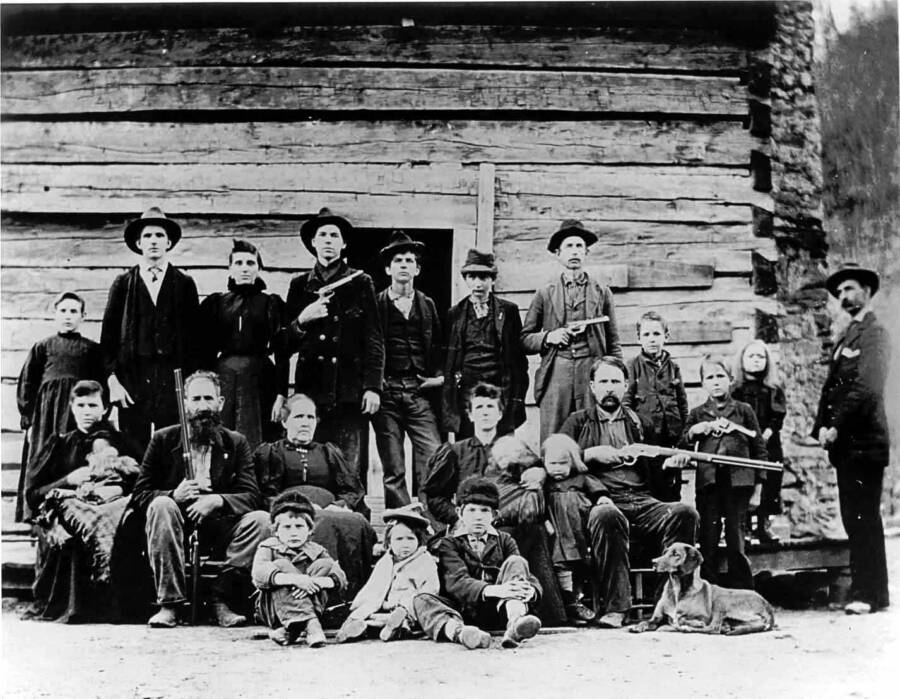
Public DomainThe Hatfield clan in 1897.
No one knows exactly how the feud began. It could have been related to the Civil War, because of a razorback hog, or due to a doomed romance between two young lovers. It may have been all three or even something else lost to time. But whatever started the Hatfield and McCoy feud was enough to make it one of the most infamous clashes in U.S. history.
The feud emerged at the tail end of the 19th century between two families, the Hatfields of West Virginia and the McCoys of Kentucky, who lived on opposite sides of a stream called the Tug Fork. However it began, their feud was in full swing by the early 1880s — and it would ultimately lead to multiple gruesome murders and even a Supreme Court case.
Today, “Hatfield and McCoys” are used to describe any two parties with a fierce feud. But how did theirs emerge? What happened during it? And when did it finally die out?
This is the full story of the Hatfield and McCoy feud, from its murky origins to its staying power in American popular culture.
The Possible Civil War Origins Of The Hatfield-McCoy Feud
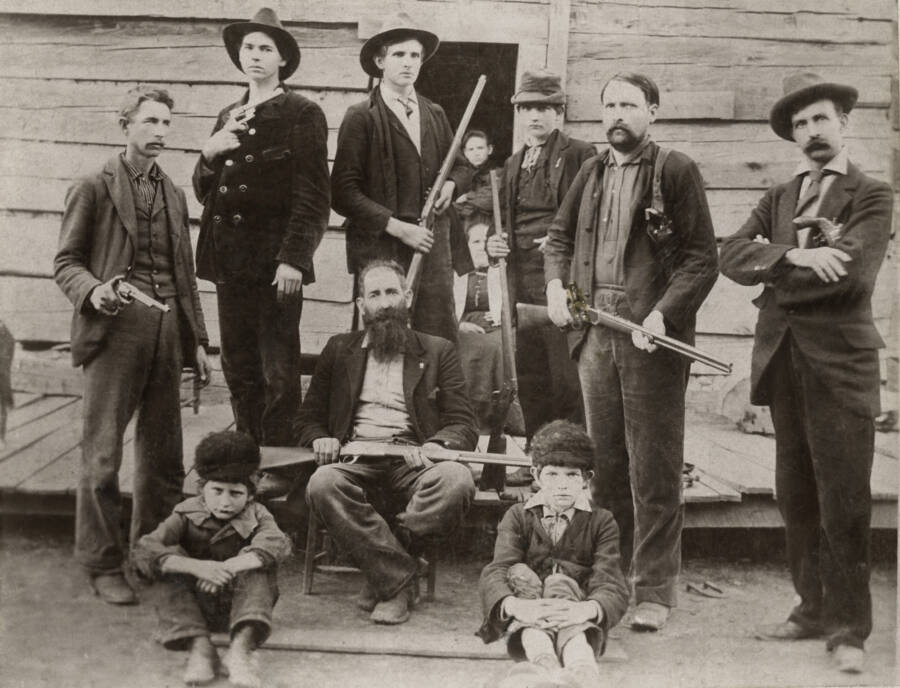
West Virginia and Regional History Center, WVU LibrariesWilliam “Devil Anse” Hatfield, sitting with a rifle over his knees, poses for a traveling photographer with several members of the Hatfield clan. Circa 1880s or 1890s.
Though it’s debatable what exactly triggered the Hatfield and McCoy feud, the earliest possible event came in the 1860s, at the tail end of the bloody and acrimonious Civil War years.
At the time, the Hatfields and McCoys were Confederate sympathizers. But McCoy family member Asa Harmon McCoy had decided to fight for the Union and joined a group of volunteers known as the Pike County Home Guards. During the Civil War, these Union volunteers made enemies in McCoy territory through repeated guerilla attacks.
William “Devil Anse” Hatfield, a member of Confederate irregulars known as the Logan Wildcats, vowed revenge for these Union attacks. And Asa Harmon McCoy was an easy target. He’d returned home at the end of December 1864 after spending time in a Union hospital due to a leg injury and lived just across Tug Fork from the Hatfield family and their allies.
On Jan. 7, 1865, the Logan Wildcats came for Asa Harmon McCoy. They cornered him as he was drawing water from his well and, though Asa tried to flee to a nearby cave, shot him to death.
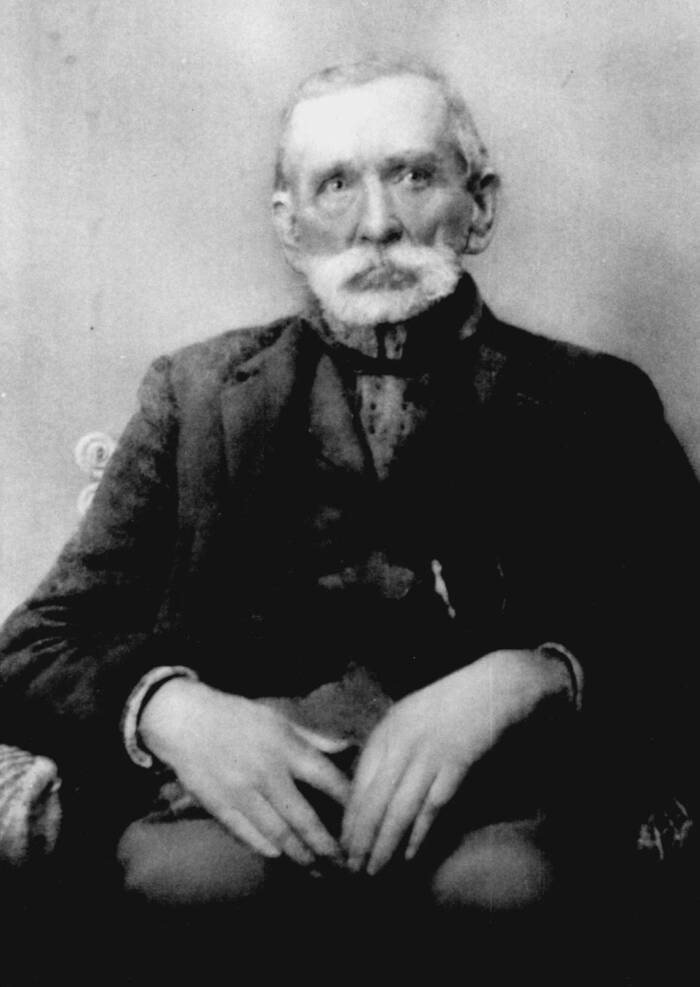
Public DomainAsa was the brother of McCoy family patriarch Randolph McCoy, seen here.
His murder was initially pinned on Devil Anse, but it may have been his uncle, Jim Vance. Whoever was responsible, Asa’s killing was the first shot across the bow in the Hatfield-McCoy feud. And relations between the two families on either side of the Tug Fork would soon deteriorate.
How A Pig Deepened The Tensions Between The Two Families
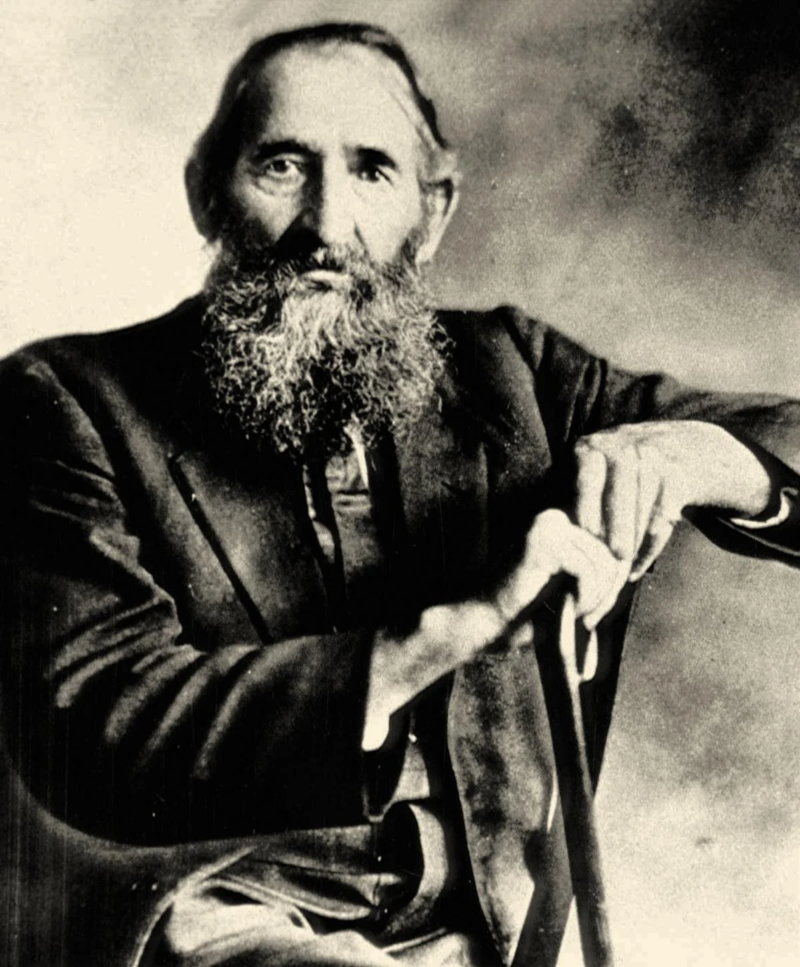
Public DomainDevil Anse Hatfield, the patriarch of the Hatfield family, circa 1880.
The Hatfield-McCoy feud may have started with a mysterious wartime murder. But it deepened because of a razorback hog.
In 1878 — 13 years after Asa’s death — his brother Randolph McCoy accused the Hatfields of stealing his pig. As the Hatfield & McCoy Foundation points out, hogs were a valuable commodity in the poverty-stricken region. Randolph claimed that Floyd Hatfield, a cousin of Devil Anse Hatfield, had absconded with the animal. But though the case went to trial, it was presided over by another cousin of Devil Anse: “Preacher Anse” Hatfield.
Unsurprisingly, the Hatfield clan won the day. The case hinged on the witness testimony of a man named Bill Staton, a McCoy relative who was married to a Hatfield, who backed up Floyd Hatfield’s story.
The McCoys were furious.
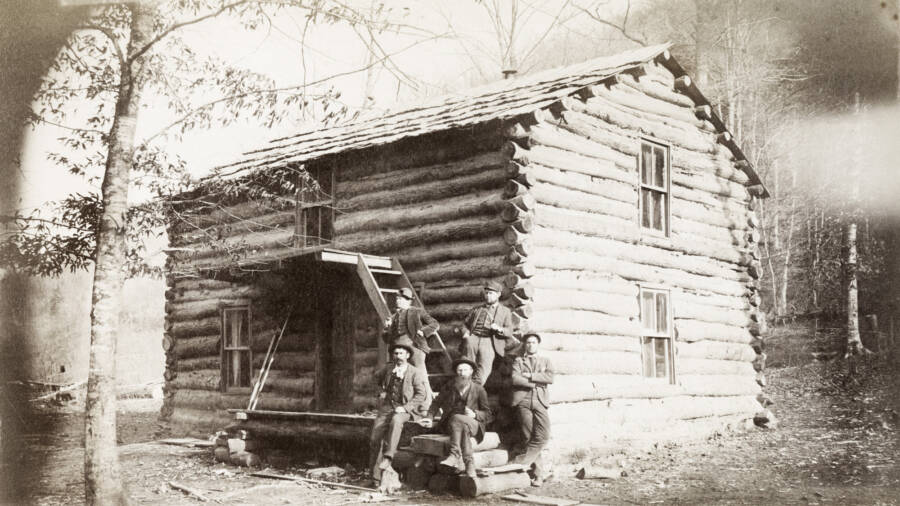
West Virginia and Regional History Center, WVU LibrariesDevil Anse Hatfield and associates in front of a log cabin. The feud between the Hatfields and McCoys erupted over the Tug Fork, which separated the two families.
Two years later, however, they got their revenge. Staton was brutally murdered by Sam and Paris McCoy, nephews of Randolph McCoy. But though Sam McCoy stood trial for murder, he was acquitted on the grounds that he’d killed Staton in self-defense.
With that, the Hatfield and McCoy feud might have been considered a draw. It could have ended there. But then the story took a twist when two star-crossed lovers entered the picture.
The Love Triangle At The Heart Of The Feud Between The Hatfields And McCoys
Shortly after the Hog Trial, Devil Anse Hatfield’s son Johnse crossed paths with Randolph McCoy’s daughter Roseanna. They fell swiftly and madly in love with each other.
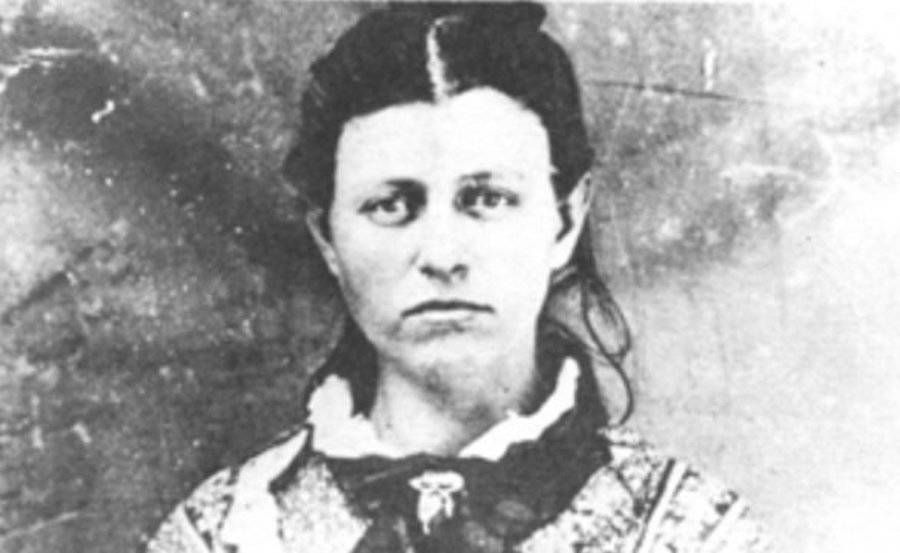
West Virginia State ArchivesRoseanna McCoy, who was involved in an ill-fated love affair with Johnse Hatfield.
But when Roseanna went to West Virginia to be with Johnse, the McCoy family came after her.
Not only did the McCoy family retrieve Roseanna, but they also arrested Johnse for bootlegging. The Hatfields couldn’t stand by and let this happen, and Devil Anse quickly organized a posse of his own to rescue Johnse.
All this was bad enough, but then it came out that Roseanna was pregnant. Neither family would allow the couple to be together, and Roseanna, unwed, subsequently gave birth to a baby girl, Sarah Elizabeth McCoy. But she and the baby were rejected by her family. Sarah Elizabeth died of measles before her first birthday, and Roseanna died soon afterward at the age of 29, purportedly from a broken heart.
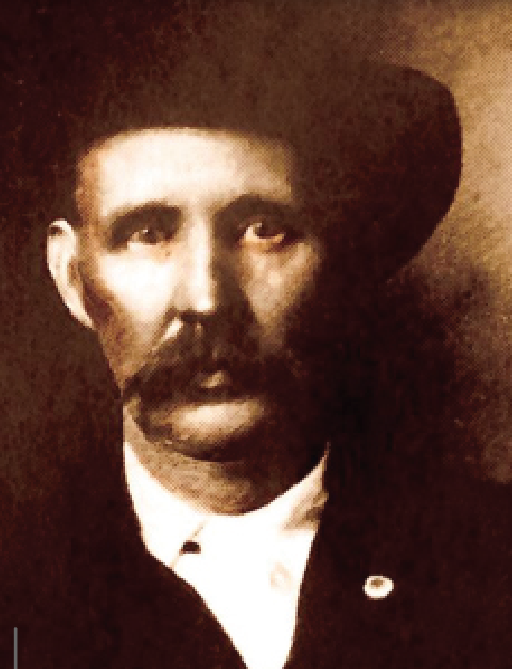
Coleman C. Hatfield CollectionJohnse Hatfield, whose doomed romance with Roseanna McCoy contributed to the Hatfield-McCoy feud.
Johnse Hatfield, however, ended up marrying Nancy McCoy — Roseanna’s cousin and the daughter of Asa Harmon McCoy, who had been murdered back in 1865 by Confederate irregulars.
The doomed love affair left even more bad blood between the Hatfields and McCoys, but it only had two casualties: Roseanna and baby Sarah Elizabeth. However, the feud between the Hatfields and McCoys would soon get much more violent.
The ‘New Year’s Massacre’ And The End Of The Strife Between The Hatfields And McCoys
During an Election Day celebration in 1882, the Hatfield-McCoy feud took a violent turn. Three of Randolph McCoy’s sons began to brawl with two of Devil Anse’s brothers. And as the fight escalated, one of the McCoys stabbed Ellison Hatfield two dozen times — then shot him in the back.
Preacher Anse Hatfield — of Hog Trial infamy — demanded that the McCoys go immediately to Pikeville jail. When the three McCoy brothers took a detour for dinner and a good night’s sleep, a furious Devil Anse went after them with a Hatfield posse.
They tied the McCoy boys to an outcrop of pawpaw trees and opened fire. The three brothers, Tolbert, Pharmer, and Randolph McCoy Jr., were swiftly killed in a hail of bullets.

howderfamily.com/FlickrA historic marker identifying the spot of the pawpaw tree incident, where three McCoys were killed in retribution for murdering a Hatfield.
As the national media began to take notice of the family feud brewing in Appalachia, the Hatfields seemed to decide to finish the job once and for all. In December 1888, they took the feud to the heart of McCoy territory when they came up with a plan to launch an attack on the home of the family patriarch, Randolph McCoy.
On Jan. 1, 1888, a group of Hatfield men led by Cap Hatfield and Jim Vance attacked Randolph McCoy’s home. Though Randolph was able to escape, his son Calvin and daughter Alifair were killed, and his wife Sarah was brutally beaten. For good measure, Randolph’s home was also burned to the ground.
This violent affair, dubbed the New Year’s Massacre, was the beginning of the end of the Hatfield and McCoy feud.
The End Of The Infamous Family Feud — And Its Impact On American Culture
After the attack on Randolph McCoy’s home, the Hatfields and McCoys became too violent for the authorities to ignore. Vance was killed by a bounty hunter, and nine members of the Hatfield family were arrested.
When West Virginia sued for their release, arguing that they had been illegally extradited, the case made it all the way to the Supreme Court. That year, the court ruled that the extradition had not been illegal. Seven of the men were sentenced to life in prison, and one was put to death.
That was largely the end of the whole affair between the Hatfields and McCoys. But it soon became a legendary part of Appalachian folklore, and it’s remembered today as the bloodiest family rivalry in American history.

Public DomainA modern flood wall along the Tug River depicts the feud between the Hatfields and McCoys.
Indeed, the feud became bigger than itself in the 20th century. Not only did it inspire multiple films, but the Hatfield-McCoy feud made its way into popular culture in other ways as well. It purportedly inspired the game show Family Feud, for example, and the acerbic character of Leonard “Bones” McCoy on Star Trek is said to have descended from the infamous family.
As such, the Hatfield-McCoy feud certainly left its mark on American history. Though it erupted in an isolated corner of the country and endured for just a few years, the violence, drama, and tragedy of the Hatfields and McCoys continues to cast a long shadow.
After this look at the Hatfields and McCoys and their bloody family feud, read about more of history’s most infamous disputes. Then, check out Kentucky’s unusual blue-skinned family, the Fugates.





